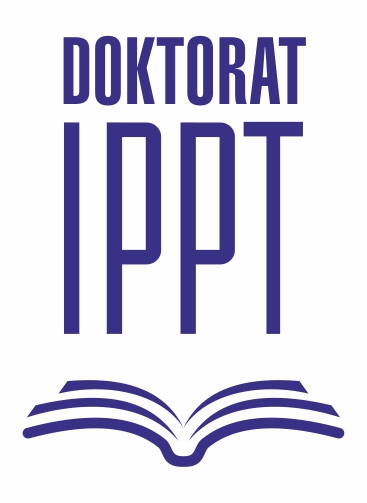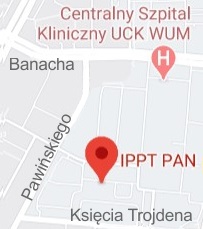| 1. |
Kulicki M., Carlos C.♦, Trzciński T.♦, Będkowski J., Stereńczak K.♦, Artificial Intelligence and Terrestrial Point Clouds for Forest Monitoring,
Current Forestry Reports, ISSN: 2198-6436, DOI: 10.1007/s40725-024-00234-4, Vol.11, pp.5-1-5-19, 2025 Streszczenie:
[Purpose of Review:] This paper provides an overview of integrating artificial intelligence (AI), particularly deep learning (DL), with ground-based LiDAR point clouds for forest monitoring. It identifies trends, highlights advancements, and discusses future directions for AI-supported forest monitoring.
[Recent Findings:] Recent studies indicate that DL models significantly outperform traditional machine learning methods in forest inventory tasks using terrestrial LiDAR data. Key advancements have been made in areas such as semantic segmentation, which involves labeling points corresponding to different vegetation structures (e.g., leaves, branches, stems), individual tree segmentation, and species classification. Main challenges include a lack of standardized evaluation metrics, limited code and data sharing, and reproducibility issues. A critical issue is the need for extensive reference data, which hinders the development and evaluation of robust AI models. Solutions such as the creation of large-scale benchmark datasets and the use of synthetic data generation are proposed to address these challenges. Promising AI paradigms like Graph Neural Networks, semi-supervised learning, self-supervised learning, and generative modeling have shown potential but are not yet fully explored in forestry applications.
[Summary:] The review underscores the transformative role of AI, particularly DL, in enhancing the accuracy and efficiency of forest monitoring using ground-based 3D point clouds. To advance the field, there is a critical need for comprehensive benchmark datasets, open-access policies for data and code, and the exploration of novel DL architectures and learning paradigms. These steps are essential for improving research reproducibility, facilitating comparative studies, and unlocking new insights into forest management and conservation. Słowa kluczowe:
Deep learning, Machine learning, Forest inventory, Tree characteristics, Open data, Precision forestry, LiDAR, TLS Afiliacje autorów:
| Kulicki M. | - | IPPT PAN | | Carlos C. | - | inna afiliacja | | Trzciński T. | - | inna afiliacja | | Będkowski J. | - | IPPT PAN | | Stereńczak K. | - | inna afiliacja |
|  | 200p. |
| 2. |
Magnuson R.♦, Erfanifard Y.♦, Kulicki M., Gasica T.♦, Tangwa E.♦, Mielcarek M.♦, Stereńczak K.♦, Mobile Devices in Forest Mensuration: A Review of Technologies and Methods in Single Tree Measurements
,
Remote Sensing, ISSN: 2072-4292, DOI: 10.3390/rs16193570, Vol.16, No.3570, pp.1-21, 2024 Streszczenie:
Mobile devices such as smartphones, tablets or similar devices are becoming increasingly important as measurement devices in forestry due to their advanced sensors, including RGB cameras and LiDAR systems. This review examines the current state of applications of mobile devices for measuring biometric characteristics of individual trees and presents technologies, applications, measurement accuracy and implementation barriers. Passive sensors, such as RGB cameras have proven their potential for 3D reconstruction and analysing point clouds that improve single treelevel information collection. Active sensors with LiDAR-equipped smartphones provide precise quantitative measurements but are limited by specific hardware requirements. The combination of passive and active sensing techniques has shown significant potential for comprehensive data collection. The methods of data collection, both physical and digital, significantly affect the accuracy and reproducibility of measurements. Applications such as ForestScanner and TRESTIMATM have automated the measurement of tree characteristics and simplified data collection. However, environmental conditions and sensor limitations pose a challenge. There are also computational obstacles, as many methods require significant post-processing. The review highlights the advances in mobile device-based forestry applications and emphasizes the need for standardized protocols and cross-device benchmarking. Future research should focus on developing robust algorithms and cost-effective solutions to improve measurement accuracy and accessibility. While mobile devices offer significant potential for forest surveying, overcoming the above-mentioned challenges is critical to optimizing their application in forest management and protection. Słowa kluczowe:
mobile device, tree attributes , LiDAR, Photogrammetry Afiliacje autorów:
| Magnuson R. | - | inna afiliacja | | Erfanifard Y. | - | inna afiliacja | | Kulicki M. | - | IPPT PAN | | Gasica T. | - | inna afiliacja | | Tangwa E. | - | inna afiliacja | | Mielcarek M. | - | inna afiliacja | | Stereńczak K. | - | inna afiliacja |
|  | 100p. |























